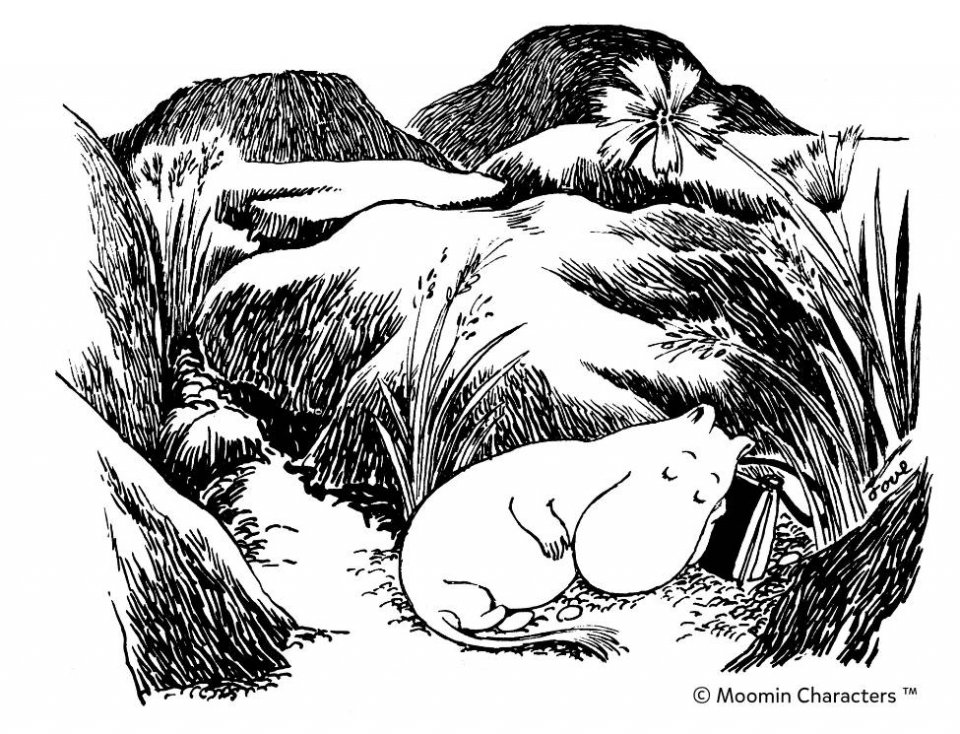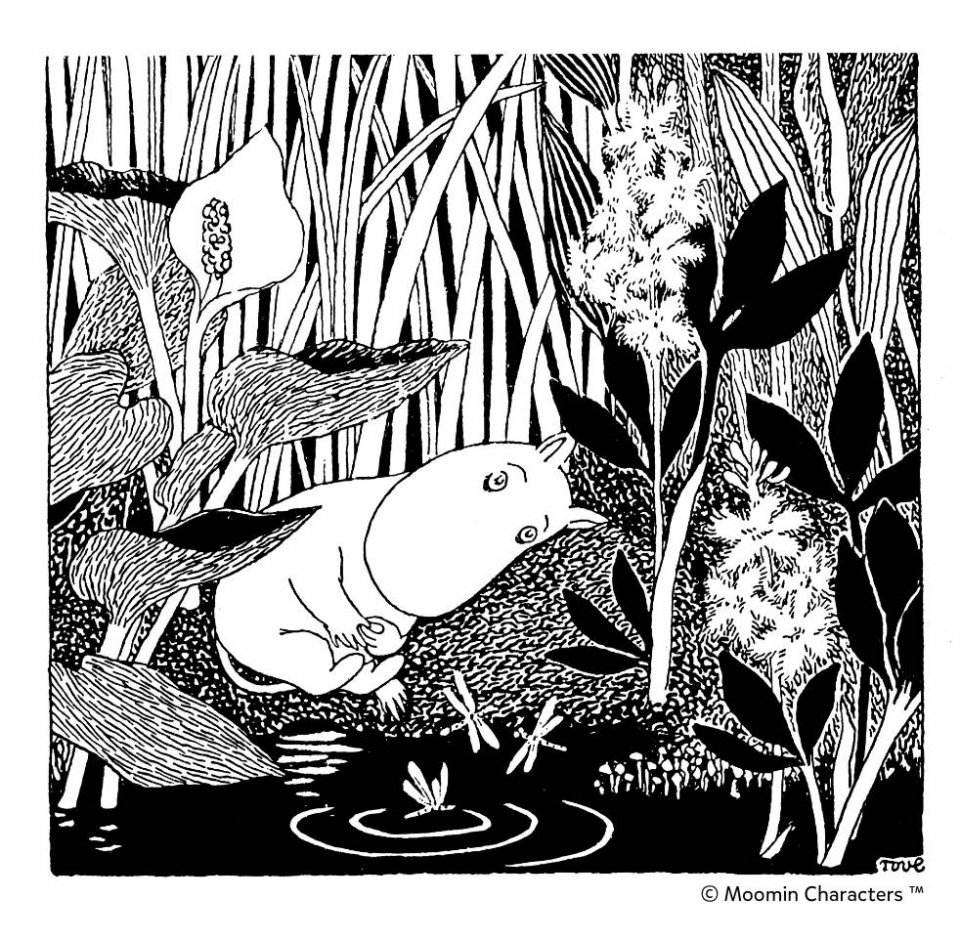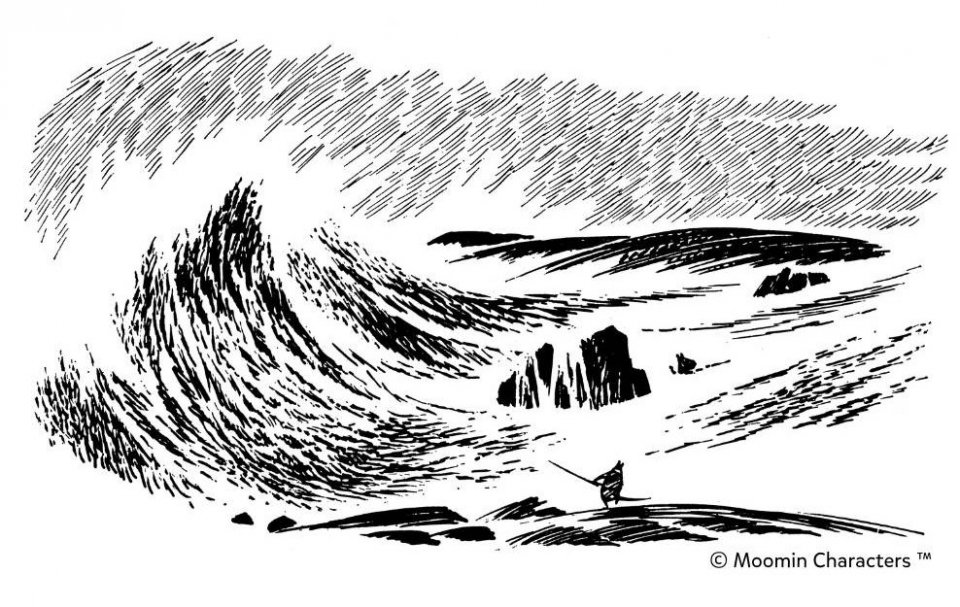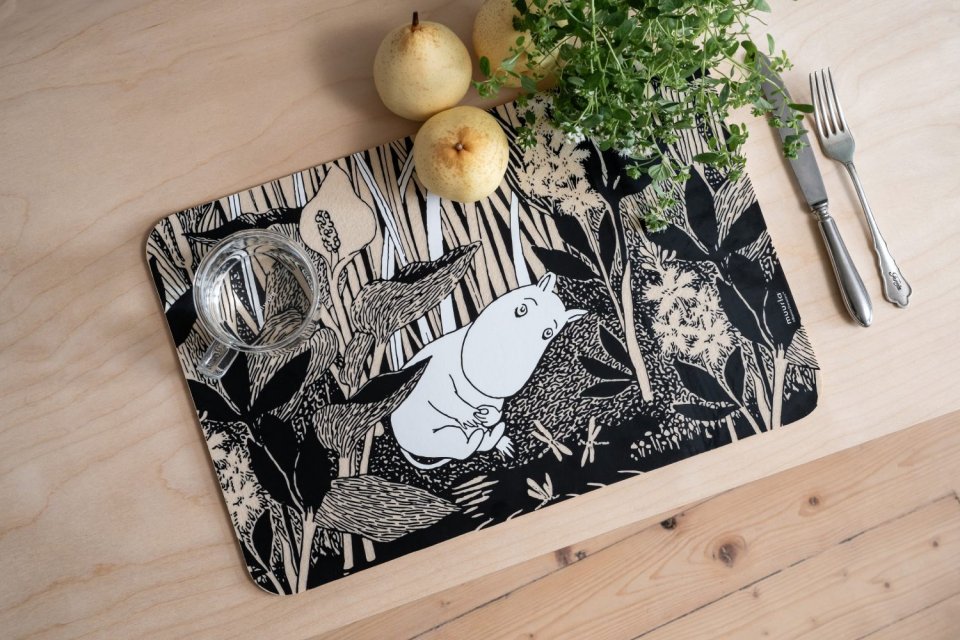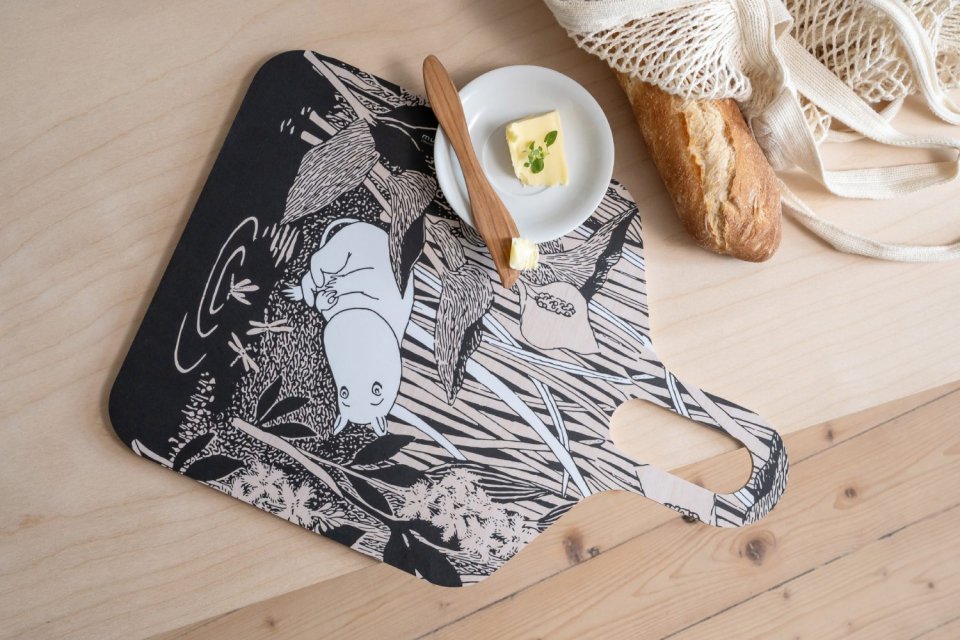Nature is an intrinsic part of the Moomin stories and their values. It not only shows in how Moominmamma lovingly cares for her garden, or how Hemulens spend their time collecting butterflies and plants, but also in the idyllic Moominvalley itself, and the ever-changing nature around it.
Whether it’s with words or illustrations, delicate or powerful, throughout the Moomin stories, nature is always described with awe and respect – and that is how the Moomins treat it. In many ways, the Moomin stories are like love letters to nature.
“Oh, to be a Moomin and to dance in the waves while the sun gets up! The night was forgotten and a long June day lay before them.”
Finn Family Moomintroll (1948)
In the different stories, the Moomin family and their friends confront many extremes of nature: storms, floods, natural disasters, and even comets. Through it all, the Moomins love their precious valley and stay curious about the forests and the sea around it, continuously setting out on journeys of exploration – filled with excitement, one with nature.
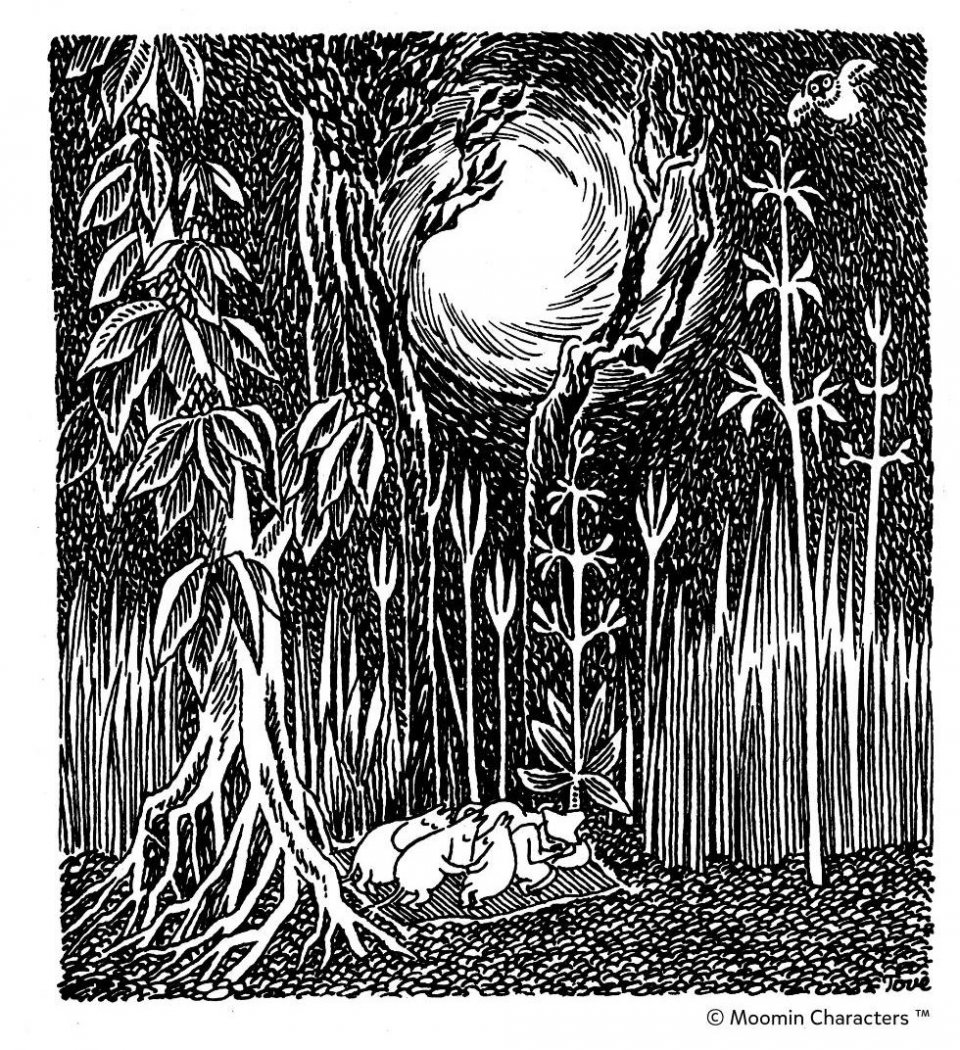
“He thought about how much he loved everything, the forest and the sea, the rain and the wind, the sunshine, the grass and the moss, and how impossible it would be to live without them all…”
Comet in Moominland (1946)
Nature symbolising life and identity
In the novel Moominpappa at Sea (1965), the power of the autumn sea can be seen as a reflection of the changing seasons of life, or one’s own nature.
“You see, my idea is to discover what secret rules the sea obeys. I must if I’m going to learn to like it.”
Moominpappa in Moominpappa at Sea (1965)
It’s almost like by understanding the strong sea, Moominpappa tries to control it, and perhaps even himself. He speaks of the sea as “an enemy worth fighting”, which could reflect getting to know oneself and the challenge of figuring life out.
In the end, he grows to accept the sea, in all its contradictions, which is a beautiful example of how stories about nature can be interpreted as self-discovery.
The Finnish archipelago as inspiration
Much of the inspiration for Moominvalley and the nature surrounding it stems from the Finnish archipelago. Spending time in nature and going for weekends at summer cottages by lakes or the sea is a big part of the Finnish lifestyle.
Tove Jansson spent a great deal of time in the archipelago, especially the island of Klovharun, which had a monumental influence on Moominvalley and how the Moomins live their lives.
Similarly, the Finnish winter can be harsh, so it makes sense that the Moomins hibernate. In the novel Moominland Midwinter (1957), Moomintroll wakes up and hates the cold season, but learns to live with it. For small moments, there is an appreciation for the quiet snow and sparkling Northern lights.
Muurla’s spring collection celebrates nature
By the pond or at sea?
Inspired by the book Moominsummer Madness (1954) and the comic Moomin and the Sea, Muurla’s spring collection continues the series of popular birch trays and chopping boards, with new coasters, placemats, and more! The Moomin Originals series is a celebration of Tove Jansson’s original Moomin illustrations.
The popular illustration of a troubled looking Moomintroll lying down on the riverbank to witness the flooding of Moominvalley (in the book Moominsummer Madness) now also adorns a new set of placemats. The double-sided chopping boards are hand-made in Finland from birch veneer.

From porridge to pancakes: Moominous cooking
Looking for Moomin inspired cooking? Hearty porridge, pancakes, foraged berries, and fish – the Moomins eat much like people in the Nordics.

Comet in Moominland – the first “real” Moomin book
Comet in Moominland is a book packed with adventure and excitement – centered around a comet, which threatens to destroy the Moominvalley.

The interesting role storms played in Tove Jansson’s life and literature
Some people run out and dance when there’s a storm – Tove Jansson was one of those people. Read more about why!

